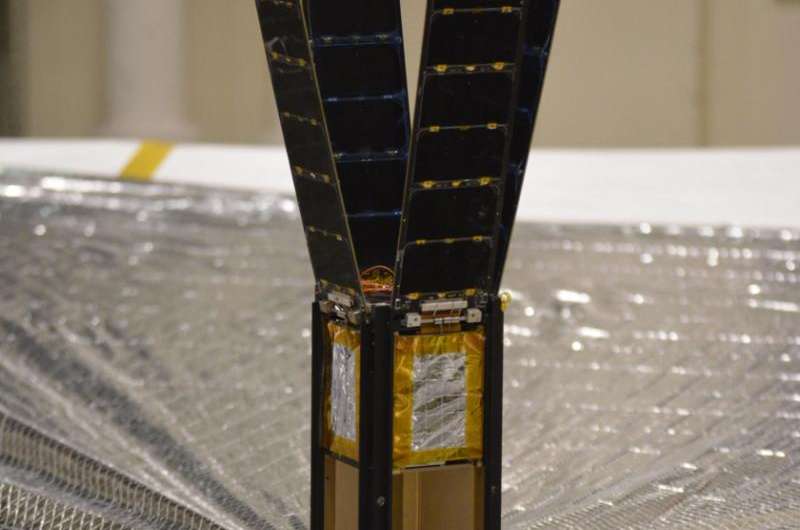May 11, 2015 weblog
LightSail team prepares for tests of mylar space wonder

The concept of LightSail—spacecraft designed to propel through space on beams of sunlight— pushed through by nothing but the pressure of sunlight—has been around for years but this month made special news because the project to make it happen is becoming far riper for takeoff. Carl Sagan chatted about this idea of solar sailing on a 1976 talk show, and the idea moved into more significant phases and hard work. Since the talk show, Prof. Sagan founded the Planetary Society; Bill Nye joined, and said in a video that they are about to realize Prof. Sagan's vision. LightSail now has a 32-square-meter sails using extraordinarily thin mylar, said Nye, the Planetary Society's CEO.
The LightSail flight unit, about the size of a loaf of bread, has inside 32 meters square of mylar, and when it goes into space it will deploy the very large sail. The Planetary Society site said that LightSail is a CubeSat, and "these tiny spacecraft often hitch rides to orbit aboard rockets carrying bigger payloads. CubeSats have standard unit sizes of 10 centimeters per side. They can be stacked together—LightSail is a three-unit CubeSat about the size of a loaf of bread."
How could a sun's rays accelerate the sail? "Light is made of packets of energy called photons. While photons have no mass, a photon traveling as a packet of light has energy and momentum." according to the Society. "Solar sail spacecraft capture light momentum with large, lightweight mirrored surfaces—sails. As light reflects off a sail, most of its momentum is transferred, pushing on the sail. The resulting acceleration is small, but continuous."
LightSail will be given a test flight this month, designed to pave the way for the full-fledged solar sailing demo in 2016. In this month's test, said ExtremeTech, the team will place it "just high enough above Earth that it can deploy the sails and perform a system check before falling back down." The team similarly said, "We won't fly high enough above the Earth's atmosphere for solar sailing, but we'll test our sail deployment sequence and snap some pretty pictures."
Rachel Feltman of The Washington Post, writing about the test in May, said "The Planetary Society hopes to test the mechanisms that would allow a more robust launch to send a solar-powered craft out into space. If the sail deploys correctly, they can move on to funding a full mission." Ryan Whitwam in ExtremeTech said preparations "for a real mission" are being targeted for April 2016, when the craft, deployed in space, could put the sail to real use.
The Society provided more details about the big test next year: In 2016, LightSail will be enclosed within Prox-1, a small satellite developed by the Georgia Institute of Technology (Georgia Tech) to autonomously inspect other spacecraft. Both satellites will be lifted into orbit by Falcon Heavy, a rocket built by SpaceX.
LightSail and Prox-1 will be released into orbit with an altitude of 720 kilometers (450 miles), high enough to escape most of the planet's atmospheric drag. Prox-1 will eject LightSail into open space and later will rendezvous with LightSail and inspect it. "When LightSail unfurls its solar sails, Prox-1 will be nearby to capture images of the big moment."
Nye said this was not a government program but just people enthusiastic about space exploration and seeking to lower the cost of space exploration so we can do more of it. LightSail is formally described as "a citizen-funded project" by The Planetary Society. Jon Fingas in Engadget said "the whole program costs just $4.5 million (a drop in the bucket compared to typical space budgets)... and of course, it doesn't rely on expensive, heavy fuel to get around."
© 2015 Phys.org



















